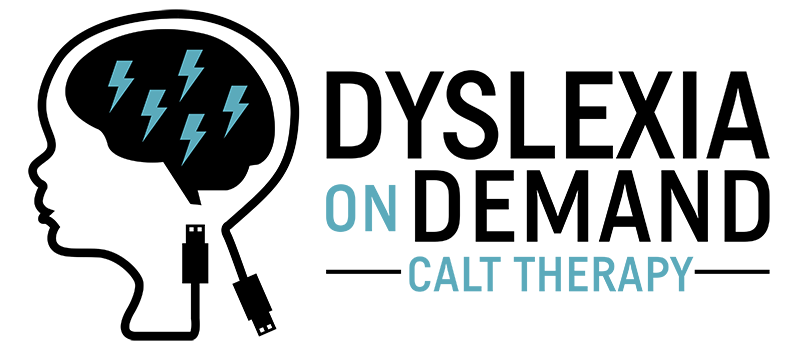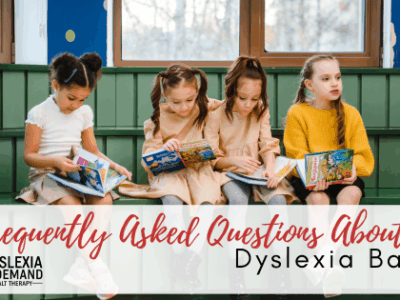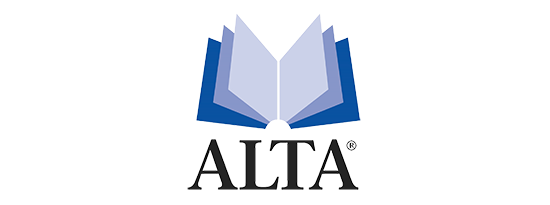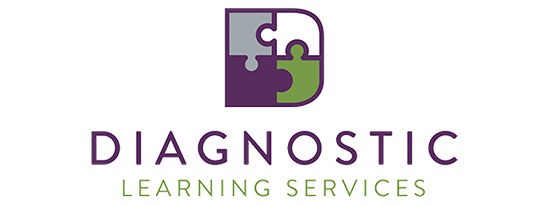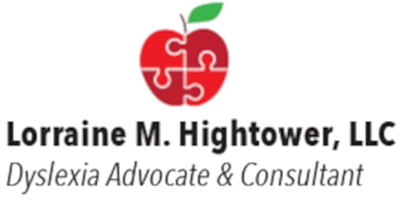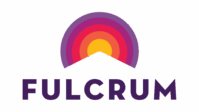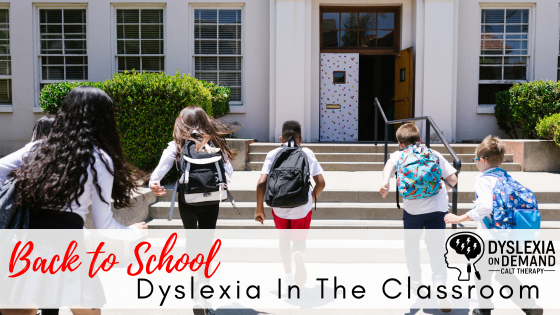
Back to School: What Parents Should Know About Dyslexia in the Classroom
Executive Summary:
As a new school year begins, students with dyslexia may face unique challenges in reading, writing, organization, and confidence—but also bring incredible creativity and problem-solving strengths. With the right support, classroom accommodations, and dyslexia therapy, every student can start the year ready to thrive.
It’s back to school season. Many students are picking out new lunch boxes, backpacks, and shoes for their new school year. Some kids may love shopping for school supplies, while others might prefer to eke out the last days of summer freedom in the sunshine. Getting back into a classroom routine is a ritual that many families need to adjust to; however, for students with dyslexia, spending hours in a classroom can present some challenges. It is so important to understand the ways that dyslexia can affect a student. This is one of the first steps to providing effective support for your child. While dyslexia is primarily a language-based learning disability, it can also impact other areas of your student’s life. Have some conversations with your child and with their school staff as you begin the new school year. And read on to learn more about what parents should know about dyslexia in the classroom.
Consider the places that dyslexia challenges might show up in your child’s classroom.
- Reading and writing require some help. By nature, dyslexic students may have a hard time with decoding, fluency, and comprehension. These struggles make it difficult to keep up with the texts at their grade level. Writing assignments can also present a challenge when students have difficulties with skills such as spelling, grammar, and organization. There may be accommodations that will help your student in the classroom that you can map out with school staff and teachers before the school year is in full swing.
- Timing can be tricky. Timed activities may still be popular in some classroom settings. From speed tests in math to note-taking during lectures to writing essays in one class period, these kinds of assignments can be quite stressful for students with dyslexia. Processing and completing tasks may take a little extra time, even with a high intelligence and skill level. Inquire about additional time accommodations for your student, if needed.
- Sequencing and organization are tough. Quite often, students with dyslexia struggle with sequencing. This can affect the ability to follow directions that involve multiple steps. In turn, this can also affect organizational skills when it comes to keeping their school work in order.
- Speaking up might be scary. It’s important to emphasize that dyslexia doesn’t affect a student’s intelligence; however, having a learning disability can affect things like confidence and classroom participation at school. Students with dyslexia may be less inclined to volunteer answers, to read aloud in class, or to participate in classroom discussions. Teachers need to be very sensitive to the emotional experience of dyslexia and how self-conscious they may feel.
Dyslexia is not all bad. With all the challenges that come with dyslexia, it’s key to note that students may have a set of great strengths as well.
- Creativity and problem-solving are enhanced. Dyslexic students often have the ability to think outside of the box, finding creative ways to solve problems. Subjects like creative writing, art, and science may be their areas of talent. Get to know what drives your student to success in the classroom, and encourage them.
- Strong visual and spatial skills may prevail. Do math, engineering, science, and art appeal to your student? Students with dyslexia tend to excel at visual and spatial tasks, which can be beneficial in subjects like these.
- Verbal skills may be strong. Although reading and writing can present challenges for dyslexic students, they often may have strong skills in verbal communication. They could be good storytellers, give solid explanations of complex ideas, or remember and re-tell facts and stories from a classroom setting.
Getting help outside of the classroom can boost your student’s experience inside the classroom. Dyslexia therapy—like the kind offered at Dyslexia on Demand—uses a multisensory, highly researched method to help students with dyslexia build foundational skills.
- Therapy can help bridge the gap. Dyslexia therapy isn’t just simple tutoring. Instead, it works to address the core deficits of dyslexia—especially the areas of phonological processing and decoding. Dyslexia therapy leads to success in building a solid foundation of skills that daily classroom instruction may not provide to your dyslexic student.
- Putting skills to work is key. In dyslexia therapy sessions, students may learn to break words into syllables or to use multisensory techniques for skills like spelling. These practices can be applied to class work and homework, helping to make assignments less frustrating.
- It can build confidence. Students who do dyslexia therapy sessions with Dyslexia on Demand get to have a consistent and predictable environment to complete this important work. This is crucial for learning and improving. In turn, stronger skills can lead to more confidence in the classroom setting. Working one-on-one with highly trained Certified Academic Language Therapists—CALTs—and using tried and true Orton-Gillingham curriculum helps students to overcome a lot of the daily challenges that dyslexic students face. This can all lead to skills like resilience and a strong work ethic that will empower them in the classroom and in the real world for years to come.
Get the good help that your child needs for a successful school year. Reach out to the experts at Dyslexia on Demand at our website.
FAQs
1. How can I help my child’s teacher understand their dyslexia?
Share your child’s diagnosis, learning profile, and any accommodations listed in their IEP or 504 plan. Open communication and collaboration between parents and teachers can ensure consistent support in and out of the classroom.
2. What are some common classroom accommodations for dyslexia?
Helpful accommodations can include extended time on tests, audiobooks, reduced copying tasks, and alternative ways to demonstrate understanding—like oral reports instead of written ones.
3. How does dyslexia therapy improve school performance?
Unlike general tutoring, dyslexia therapy targets the root causes of reading struggles using structured, multisensory techniques like the Orton-Gillingham approach. These sessions strengthen decoding, spelling, and confidence, helping students apply new skills in everyday schoolwork.
References
International Dyslexia Association. (2017). Definition of dyslexia. International Dyslexia Association. https://dyslexiaida.org/definition-of-dyslexia/
International Dyslexia Association. (2017). Classroom accommodations for students with dyslexia. International Dyslexia Association. https://dyslexiaida.org/classroom-accommodations-for-students-with-dyslexia/
National Center on Improving Literacy. (2020). Dyslexia: What families need to know. University of Oregon. https://improvingliteracy.org/fact-sheet/dyslexia-what-families-need-know
Shaywitz, S. E., & Shaywitz, B. A. (2020). Overcoming dyslexia: Second edition. Vintage.
Snowling, M. J., & Hulme, C. (2012). Interventions for children’s language and literacy difficulties. International Journal of Language & Communication Disorders, 47(1), 27–34. https://doi.org/10.1111/j.1460-6984.2011.00081.x
Eide, B., & Eide, F. (2011). The dyslexic advantage: Unlocking the hidden potential of the dyslexic brain. Penguin.
Academic Language Therapy Association. (n.d.). What is a Certified Academic Language Therapist (CALT)? https://www.altaread.org/
